|
 570 3rd Ave # 219 570 3rd Ave # 219
Bethel, AK 99559
(907) 543-1541
 625 C Street
Anchorage, AK 99501 625 C Street
Anchorage, AK 99501
(907)929-9200
anchoragemuseum.org
|
|
 |
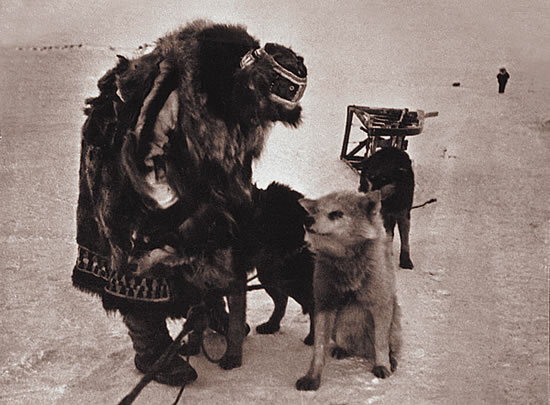
|
Martin Family Collection, 1930s, Anchorage Museum B07.5-A8 |
Young man hitching up his dogs for a trip. Wassilie Evan noted, "You always heard that a person who had a lot of dogs had three dogs, since they didn't have good nets to acquire enough fish for dog food. They were grateful for their help." |
Ikamraruak Sled
 |
|
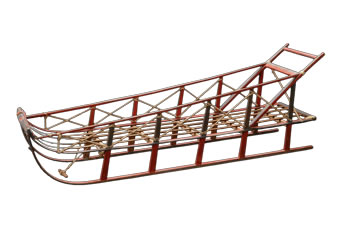
|
Ikamraruak/Sled model collected by Moravian missionaries John and Edith Kilbuck during their years in Bethel between 1885 and 1921.
|
Gift of the Kilbuck Family--Katherine, Elizabeth, John, Margaret, Helen, and Edith, Anchorage Museum 2004.059.002 |
| |
Kankiik Ice skates

|
Ice skates shaped like puffins. Before significant snowfall, men traveled upriver to their hunting areas using skates.
Frank Andrew recalled: "We used them only at daybreak and when we returned to our camps. We removed them when we were able to see outside as we were afraid we might pass animals by." |
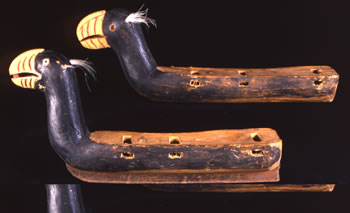 |
|
J. A. Jacobsen, 1883, Togiak, Ethnologisches Museum Berlin IVA5389 |
Tangluk Snowshoes
 |
|
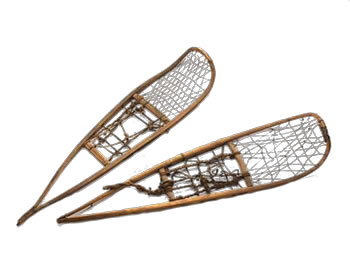
|
Snowshoes Elena Charles said: "Men couldn't walk without snowshoes among the trees because it is very easy to sink into deep snow. They always used snowshoes to travel."
|
D. F. Tozier, 1918, Bristol Bay, Courtesy, National Museum of the American Indian, Smithsonian Institution 7/1136 |
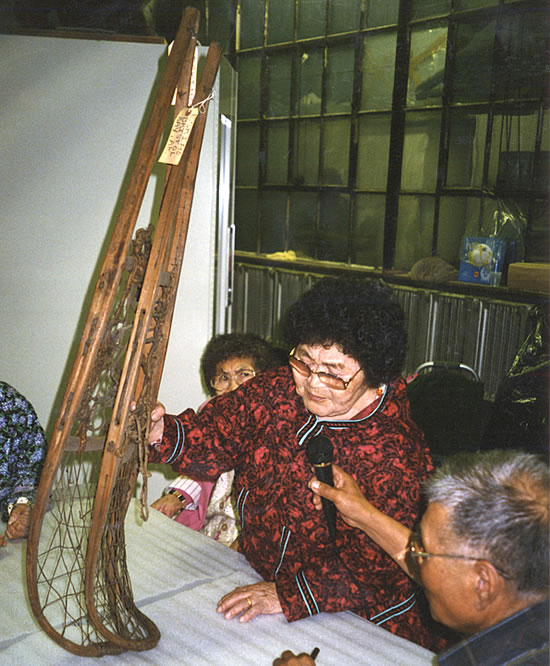
|
AFR |
Annie Blue shows how snowshoes can be used to dig in snow. She recalled: "I used snowshoes when I hunted for squirrels on the mountainsides, and I never sank in the snow." |
Science panel: Distributing one's weight 
A person's mass is related to body weight, which exerts a downward force. Pressure is the force divided by the area over which that force acts.
For example, a 150-lb man standing on one foot exerts twice as much pressure on the area under that foot as the same man standing on both feet exerts on the areas under the two feet.
The snowshoes' large surface distributes the downward force of their wearer's mass over more area, reducing the pressure and enabling the wearer to walk on top of slush, snow, or soft ground without sinking through.

|
Next |
|

